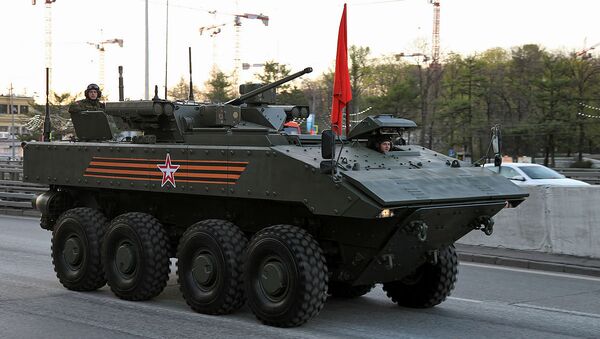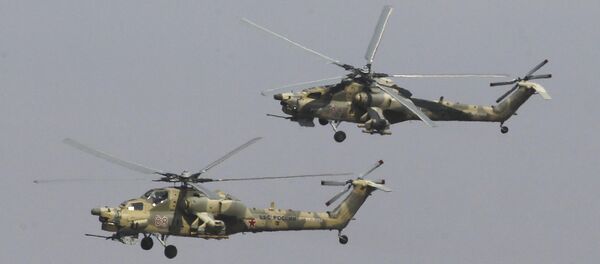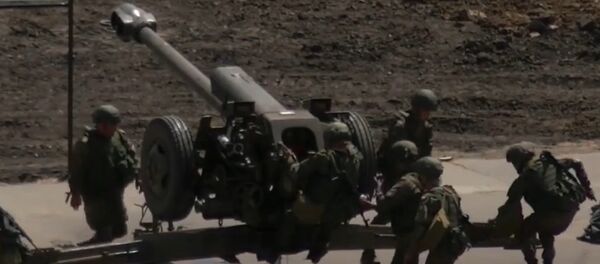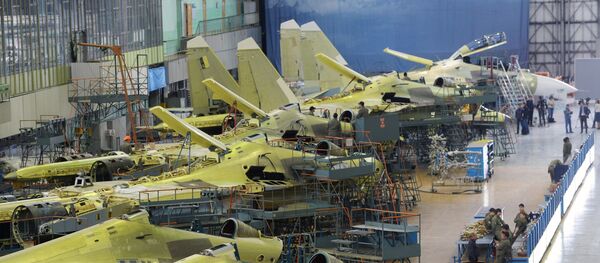Last week, Russian media reported that the final stage of amphibious testing on the Bumerang wheeled armored personnel carrier/infantry fighting vehicle platform had begun. It is expected that vehicles in the APC configuration, dubbed the K-16, will begin to enter service in the Russian military by the end of the year. In 2017, the Arzamas Machine-Building Plant is slated to begin mass production of the K-16.
"First and foremost," the military analyst recalled, "it was necessary to protect the APC and other military vehicles created on the Boomerang platform from the detonation of mines. In previous comparable APC and (IFV) designs, this had been the vehicle's most vulnerable area….VPK solved this task with flying colors."
Increasingly exacting demands were also made regarding the new vehicle's armor. "Using new materials and optimal geometry research, designers succeeded in making the vehicle impenetrable to small arms and small-caliber munitions, as well as fragments of large caliber shells."
Moreover, the vehicle, which sits on an 8x8 wheeled suspension, is now proving its amphibious capabilities, with its 510-horsepower diesel engine allowing the 15-20 ton unit to nimbly navigate rugged terrain.
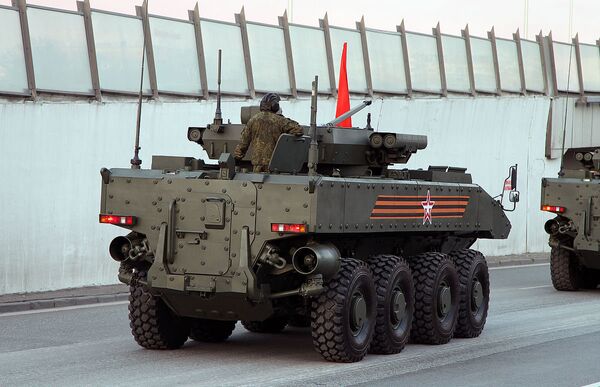
"On the highway," Tuchkov noted, "it is capable of speeds of up to 100 km per hour, with fuel supplies for up to 800 km. Equipped with two waterjet engines, the vehicle is also capable of overcoming water obstacles, and of 'swimming' in rough waves. For this the Bumerang is equipped with intakes and snorkels towering above the water, providing for a sealed engine and internal compartments. In this connection, vehicles using the Bumerang platform can be used by the army, but also by the Navy's amphibious assault units."
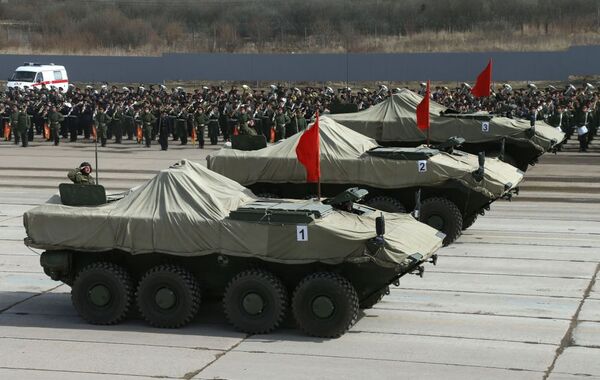
The Bumerang platform was developed according to an extremely tight schedule. With the Defense Ministry approving the project in November 2011, the first prototypes were delivered in 2013; the vehicles participated in the celebration of the 70th Anniversary of Victory in the Great Patriotic War on May 9, 2015. Since then, they have been undergoing extensive testing, and are being selectively introduced into the army.
"To date," Tuchkov recalled, "the Boomerang platform includes two combat vehicles built for different purposes: the K-16 APC and the K-17 IFV."
In the foreseeable future, the military expert added, the platform is expected to feature a 'full deck' of configurations. Prospective variations include a command vehicle, along with reconnaissance, electronic warfare, self-propelled artillery, armored ambulance and repair vehicles, making the Bumerang something like deadly Legos, configurable according to the military's needs.
Accordingly, the APC variant of the platform is equipped with the 'Bumerang-BM' module, developed by the Tula Instrument Design Bureau. The module includes a 2A42 30 mm auto cannon, along with a coaxial 7.62 mm PTK heavy machine gun, and the Cornet anti-tank system, which features four laser-guided missiles.
"The module is unmanned and fires remotely, either by the vehicle commander or a gunner. This allows for an increased survivability rate for the crew on the one hand, and on the other, for a reduction in the module's size, including a more dense arrangement of the equipment that can be placed within it."
"There are also blocks on the system whose purpose has not yet been disclosed," Tuchkov recalled. "According to experts, they may contain systems of electronic warfare or optronic countermeasures."
"The Bumerang-BM main gun's maximum range is 4,000 meters. Ammunition consists of 500 rounds, including 160 armored piercing tracers and 340 high-explosive rounds. The machine gun box includes 2,000 rounds of ammunition, with a 1,500 meter firing range. The gun barrel is capable of being elevated up to 70 degrees, and of being fired on air targets. Anti-tank missiles, located on the sides of the unit in transport-launch containers, are capable of firing between 8,000-10,000 meters, depending on the modification."
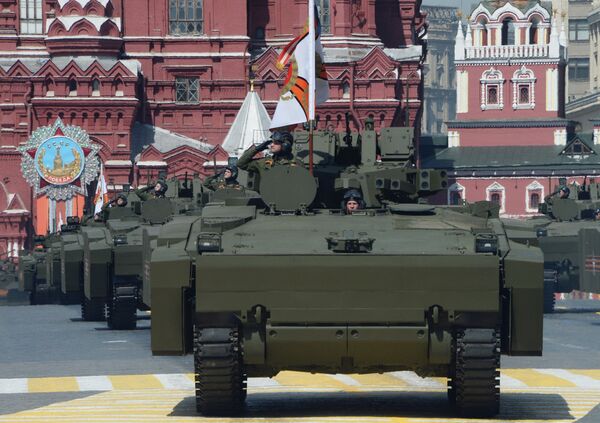
"As far as the K-17 IFV is concerned, in accordance with the objectives of [providing] fire support for infantry, it is necessary to equip it with a powerful combat module like the Bumerang-BM. Open-access information on this process is extremely limited, and sometimes contradictory." In any case, the analyst noted, the K-16's arsenal is likely to include smoke and possibly aerosol grenades.
Ultimately, according to Tuchkov, the next likely project to be developed on the basis of the Bumerang platform is a 120 mm self-propelled artillery system, along with a 57 mm self-propelled anti-aircraft system.

